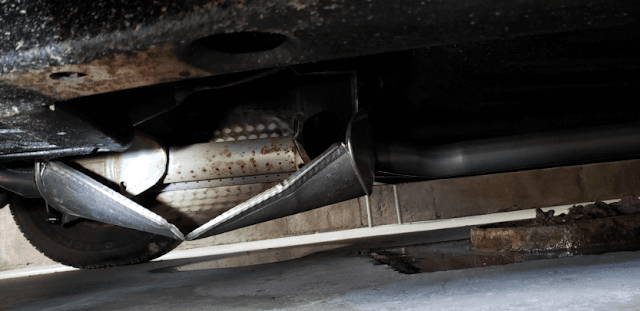Muffler Design and Sound Absorption Strategies
Aftermarket enthusiasts wade through distracting piles of advertising media. Digital or paperbound, there’s usually more hype than anything else locked inside the promotional literature. How do we separate engineering science, the real performance gains, from the wily publicity brochures? Maybe, just this once, all of the available styles and types of aftermarket exhaust systems are muddying the waters. What’s needed is a strategy, a muffler design and sound absorption game plan.
A Noise-Based Muffler Design Strategy
The top exhaust system brands make their performance gains a reality, but they’re sometimes a little coy when it comes to explaining the engineering methods behind the product. You start your strategy with a shortlisting process, a way of putting your thoughts on paper. What do you want the muffler to do? Is there a sound profile you want to emulate? Yes, you want to absorb the sound, but you also probably want to tune the noise until it reproduces a legendary tone. Shortlist your candidates by assessing their available sound profilesAdding Performance-Tuned Attributes
If the backpressure is sliding quickly through, the noise profile is taking shape, and the power is felt through the soles of your feet, then you’re well on your way to realizing your strategy. Of course, in order to release that power, the muffler needs to be built with unrestricted qualities. Remember, the loud growl requires baffles and special channels, plus material packing, so the chamber of the muffling beast needs to expand. Subsequently, the vehicle’s breathing improves, engine components experience less backpressure-induced stress, and a figurative leash is slipped so that engine horsepower increases.Channel and Chamber Music
If the muffler noise profile sounds like any particular music genre, it’s probably heavy metal, no pun intended. The pulsing pressure waves are rushing down the exhaust system pipes, and the sound waves are winning the race. As both sets of vibrating waves arrive in the muffler chamber, they interact in crazy ways to create a unique engine growl, a rasping sound that your sound absorption strategy finds entirely pleasing. This is the heart of the matter, the site where the different brands stamp their signature sound profiles. Look for manufacturers that highlight perforated tube architectures and exotic packing materials, a muffler configuration that plays a game of tug-o-war with absorptive and restrictive combo packages.Noise absorption tech adds a bass growl to the muffler while reflection components eliminate engine drone until you can pick up the individual cycling pulses inside the internal combustion engine. Better yet, that tuned and branded chamber delivers the signature sound while it augments engine performance. That’s the goal, that’s the artistry and science that goes into muffler design.



If only my car exhaust looked as clean as that! Although, I must say there is a crucial step missing at 2.05 which is the cursing and swearing when the flat part of the screw clamp doesn't stay connected to the wrap
ReplyDeletehow to calculated perforated hole diameter?
ReplyDeleteand on which frequency should i calculated transmission loss?